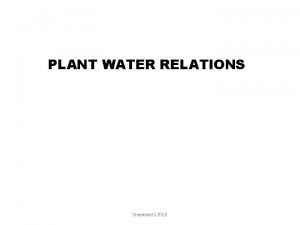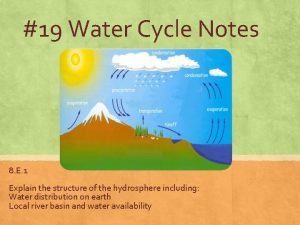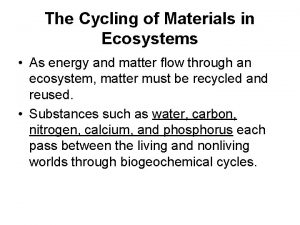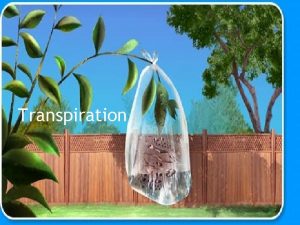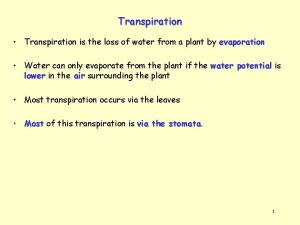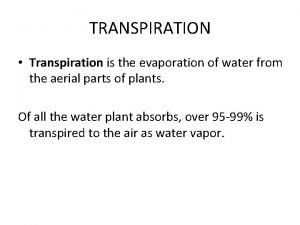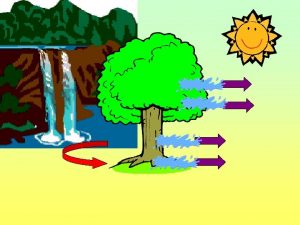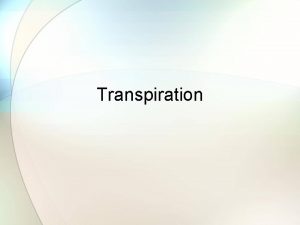Plant Transport 3 Transpiration the loss of water






- Slides: 6

Plant Transport

3. Transpiration, the loss of water from leaves (mostly through stomata), creates a force within leaves that pulls xylem sap upward. 2. Water and minerals are transported upward from roots to shoots as xylem sap. 4. Through stomata, leaves take in CO 2 and expel O 2. The CO 2 provides carbon for photosynthesis. Some O 2 produced by photosynthesis is used in cellular respiration. 1. Roots absorb water and dissolved minerals from the soil. 5. Sugars are produced by photosynthesis in the leaves. 6. Sugars are transported as phloem sap to roots and other parts of the plant. 7. Roots exchange gases with the air spaces of soil, taking in O 2, and discharging CO 2. In cellular respiration, O 2 supports the breakdown of sugars.

Water Movement in Xylem

q Transpiration is the process by which plants release water vapor into the air through pores in their leaves called stomata. q How it works: q Water is pulled up the stem of the plant by the strong attraction of water molecules to each other. q The attraction between 2 like molecules is called cohesion. q Water moves up the plant, from the roots towards the leaves, because of a strong attraction between the water molecules and the xylem wall q The attraction of 2 different molecules is called adhesion.

q. Capillary action is the rise of liquids in narrow tubes. It also contributes to the movement of water up xylem Notice the smaller the tube the higher the water rises (due to adhesion)

Stomata • Stomata are pores on the underside of the leaf that allows for gas exchange and transpiration. • Guard cells open and close the stomata.

